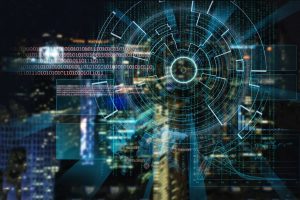
Deep learning systems – in which algorithms learn to perform specific tasks by analyzing large amounts of training data – are increasingly prevalent in transportation, security, medicine, and even music and art.
This spring semester, students in the Whiting School of Engineering’s Machine Learning: Deep Learning course studied the principles behind state-of-the art deep learning models. During the course, graduate and undergraduate students learn about the basics of deep neural networks and their applications to various artificial intelligence (AI) tasks; the final five weeks of the semester are spent developing their own deep learning innovations to address a real-world problem of their choosing.
Thirty-two student teams shared their final projects during the course’s virtual showcase on May 9.
Students built models that could do everything from assisting surgeons in operating rooms and helping diagnose disease to predicting costly hospital readmissions and stock price movement.
“The course gives students practical experience in building neural networks. I’m always impressed by the quality and range of the final projects that the students are able to complete in just one semester of studying deep learning,” said course instructor Mathias Unberath, an assistant professor of computer science and a member of the university’s Laboratory for Computational Sensing and Robotics and Malone Center for Engineering in Healthcare.
This year, Intuitive Surgical, a leader in the surgical robotics market, gave out a total of $1200 in prize money for the best projects: two $400 Best Project awards and two $200 Runner-up awards. The company has a long-standing partnership with the university and many students from the course have gone on to secure internships and jobs there, said Unberath.
One of the Best Project awards went to Jonathan Edwards, Ariel Bao, Elaine He, and Sofia Xu, all computer science majors and members of the Class of 2022, for their project on music generation using deep learning techniques.
For those tired of listening to the same old songs, the team set out to build a model that could produce an unlimited repertoire of music in the style of a specific musician. The students employed two popular neural network architectures, FNet and LSTM, to generate pleasant-sounding music by training the model on Ghibli and Beethoven pieces.
“We found that the music generated by the FNet model sounded more natural than the LSTM model. When surveyed, the majority of our study participants thought that the music sounded like it was composed by a human,” said Edwards.
The other Best Project award went to Hashem AlSabi, Samer Aslan, Logan Donaldson, and Ryunosuke Saito, who built a deep learning framework to perform fine-grained classification of various bird species.
The team proposed a deep learning method to recognize the bird’s species based on their feathers. One important feature of their model was hierarchical labeling, which allowed the model to detect subtle differences in feather images to correctly identify the bird.
“Our particular application was bird species identification, which is useful for conservation efforts. But this kind of fine-grained image classification has potential applications in many domains, including crop disease identification and medical image retrieval,” said Donaldson, an applied mathematics and statistics major.
Teaching and classroom assistants for the course were Catalina Gomez, Weiyao Wang, Sihan Wei, Cong Gao, Hao Ding, Zhuoying Li, Kieneng Chen, Jessica Su, and Krushang Vahgasia.
See the Runner-ups and honorable mentions below:
- Unsupervised Image Classification, by Tanuji Alapati, Jacob Feitelberg, Amol Khanna, Nicholas Parente (Runner-up)
- Hospital Readmission Prediction from Longitudinal Care Data, by Weicheng Hu, Xiaokun Yu, Shalini Subramanian, Kaihua Hou (Runner-up)
- Surgical Gesture Recognition in Videos and Kinematic Data, by Juan Barragan Noguera, Autumn Hughers, Hisashi Ishida, Mustavi Sarker (Honorable Mention)
- Image-to-image Translation: People’s Face to Simpsons Characters, by David Calvo, Andrew Ko, Inpyo Ma, Kyuhee Jo (Honorable Mention)